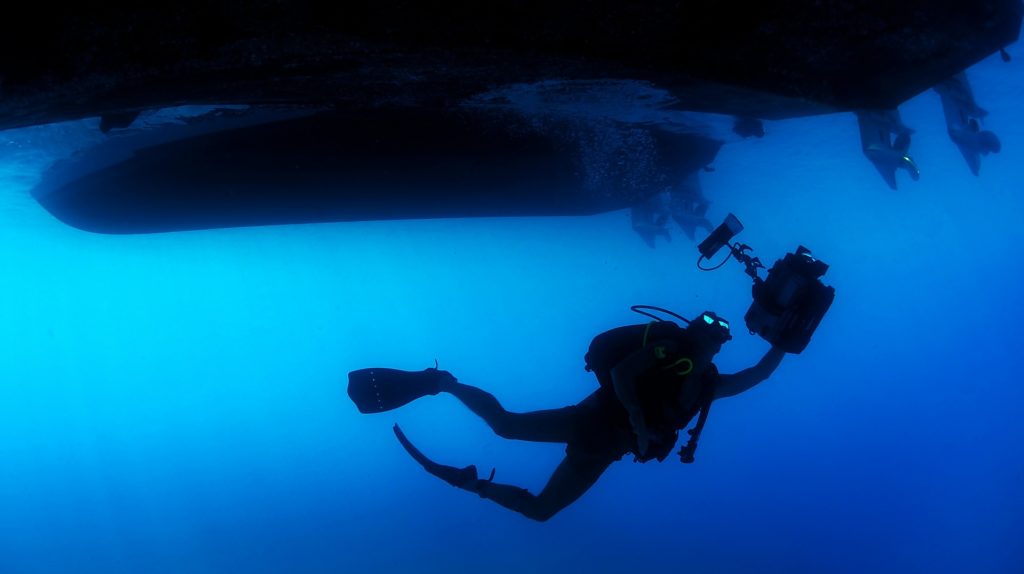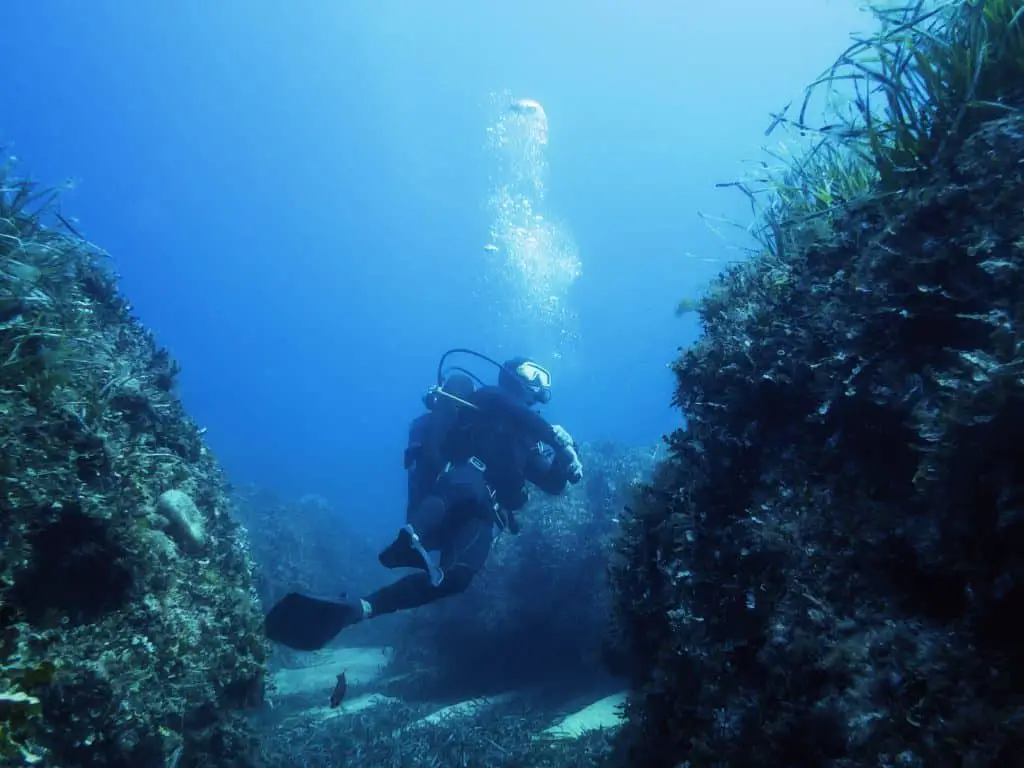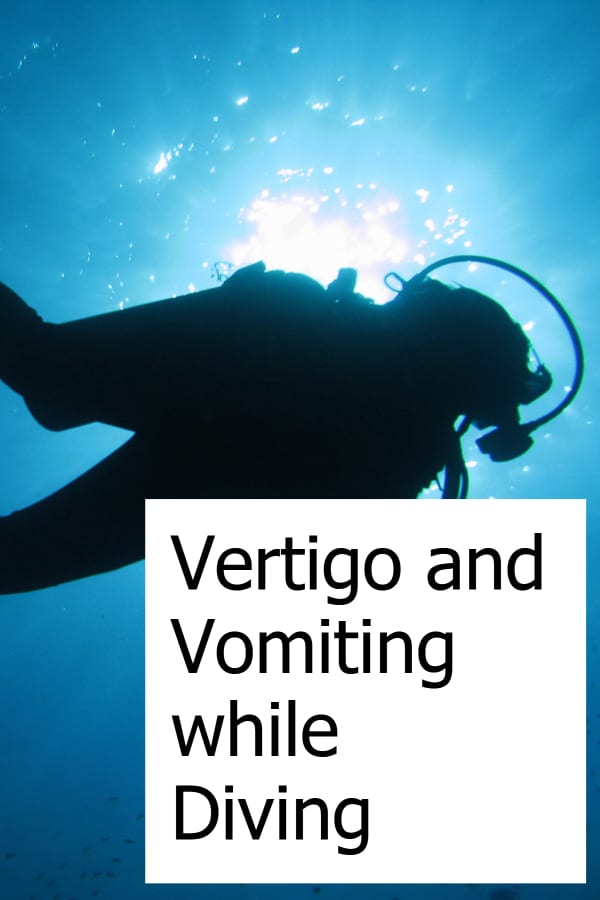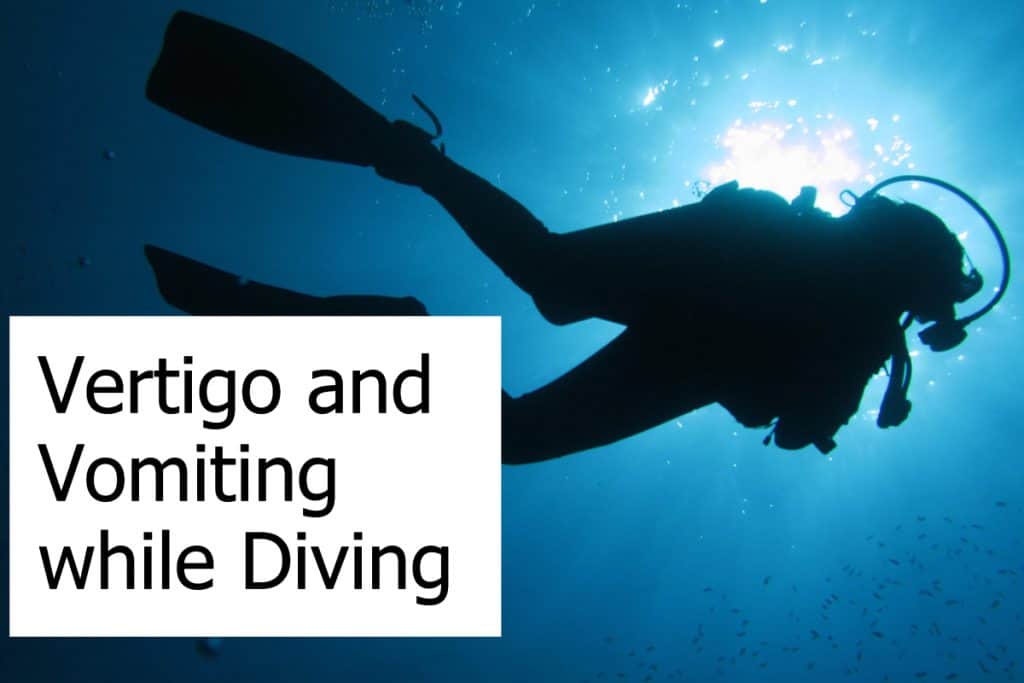How to Prevent Vertigo and Vomiting while Scuba Diving?
Diving is an amazing sport. Sometimes though, unexpected things can happen to you when you’re underwater. Two of the worst things that divers can experience when they are underwater are Vertigo and Vomiting scuba diving. We collected the information to give you some background on these problems and what you can do during a dive when you experience them!
Yet, these are not the only problems you might face as a diver. Coughing and sneezing are more common issues you might face. You will also find information on these concerns in the post.
Sometimes the urge to vomit immediately follows vertigo when diving and other times a diver may be suffering from symptoms of seasickness. Either way, learning how to prevent and deal with these issues while underwater can help you from suffering an expansion injury or worse.
What is Vertigo and What Causes it when you are underwater?
Having vertigo for the first time when you dive can catch you off guard. The sensations associated with vertigo can be very disorienting.
Many times, people feel dizzy and nauseous. Sometimes you will feel like the world around you is spinning even though you are floating still. One of the most important prevention mechanisms is to keep your ears equalized to prevent pressure differences between your inner ear, middle ear, and surroundings.
What causes Vertigo when Diving?
Causes of vertigo when diving can be different issues ranging from chronic illness to ear infection (Can Snorkeling or Scuba Diving Cause a Sinus Infection?). If you are feeling healthy and have no known illnesses and experience vertigo while diving it is likely due to a problem equalizing your inner ear (Best Tips on Equalizing when Diving). Ensure that you know techniques to equalize your ears in order to prevent vertigo in the first place.
As divers go deeper under the water when diving, they need to equalize constantly to counteract vertigo. Any imbalance between the pressure in the inner ear and middle ears with the ambient pressure can cause alternobaric vertigo.
Does it only happen during ascent or descent?
Vertigo during a dive is more common when divers are ascending than descending. Divers who wear hoods may also experience vertigo more often than divers who don’t.
When the diving hood fails to create an even seal on both ears (Ear Plugs for Scuba Diving), it can cause uneven pressure within the middle ear leading to alternobaric vertigo.

How to Orient Yourself When You Have Vertigo
If you start to get disoriented during vertigo while you’re diving, there are some quick things that you can do to figure out which way is up. You can use your gas bubbles if you are using a regulator. Watch the air bubbles go up, and you know that is the direction of the surface.
When you are using a rebreather (Scuba Rebreather vs. Regulator – Ready to dive without Bubbles?), or for some reason cannot see your bubbles, looking at the water droplets in your goggles can help. The water in your goggles will always be going down toward the bottom because of gravity (Is There Gravity In Water? How does Buoyancy work underwater?). If you can remember these two things, then you should be able to tell which way is up and which way is down.
Use your dive buddy to help!
Being disoriented with vertigo when diving is not safe. If you happen to find yourself in this position, use your dive buddy to help you.
You don’t want to ascend too quickly (Tips For A Safe Ascent And Descent While Scuba Diving) and risk an expansion injury (Pulmonary Barotrauma – What is it and How can you Prevent it?) like decompression sickness from diving. Try stabilizing with your dive buddy or by using a mooring line. This will ensure your safety and reduce your risk of injury like decompression sickness from rapidly ascending.
Vomiting under Water
There are several reasons that you may find yourself vomiting while diving. If you notice that you are nauseated and are about to puke the first thing you should do is brace yourself either against your dive partner or a mooring line.
Because nausea vomiting is a strenuous process, you don’t want to risk rapid ascension during the process as you may otherwise risk decompression illness amongst other potential injuries. If you performed a rapid ascent and are suffering from the onset of symptoms of Caisson sickness then immediately seek medical attention!
Keep your regulator in your mouth!
Next, you will want to make sure that you have a firm hold on the back of your diving regulator. This ensures that the regulator will stay in your mouth when you vomit.
The last thing that you will want to do is take your regulator out of your mouth while you have to vomit. If you take your diving regulator out, you risk accidentally inhaling water. Many people involuntarily inhale after having thrown up.
Vomit through your scuba regulator
After you have braced the regulator against your mouth, you can vomit through your regulator. Your throw-up will pass through the diving regulator just like air and oxygen does.
Once you’re done puking, and nausea starts to subside, you can clear your dive regulator and start your safe ascent to the surface. If you cannot clear your regulator, you may need to use your backup dive regulator.
Ascend safely to the surface
If you ever find that you have vomited while scuba diving you do want to make sure that you return safely to the surface as soon as possible. You don’t want to risk your health and possibly your life by continuing the dive after throwing up – Diving and Hypothermia – Is It Really A Risk?.
These could be symptoms of a serious health condition. Puking from nausea while you dive may also cause you to become disoriented and start a rapid ascent to the surface which may lead to Caisson Disease or barotrauma. Make sure to immediately seek medical help if you experience such symptoms!
Do you need to know Dive Tables when you have a Dive Computer?

How to Handle Coughing and Sneezing
Sneezing and coughing are two common concerns for scuba divers. Many times, the dryness of compressed air (Weight of Compressed Air) can cause people to have a coughing fit. If you find that you cough or sneeze while underwater don’t panic – Panic Attacks Underwater – How to Recognize and Prevent Them.
Cough through your regulator
You can cough directly through the regulator. The procedure is going to feel very similar to what you do if you were to vomit – Scuba Regulator Buying Guide – What do you need to know!
You will need to secure your regulator with a free hand while making sure you can keep yourself oriented by either getting assistance from your dive partner or holding on to a mooring line. Some divers choose to keep gum in their mouth to help with the dryness in their throat and avoid coughing.
Sneeze into your mask
When sneezing you’re going to sneeze directly into your dive mask. If moisture or snot makes it into your mask wait until you’re done sneezing.
Once you’re done, you will clear your mask the same way you would if you had a leak or had gotten water into your mask.
Vertigo after a Dive
If you experience vomiting and vertigo after you surfaced then there are a number of things that can be the cause. These causes of vertigo and its spinning feeling are typically related to the brain or ears. The most common causes are inner ear decompression sickness or inner ear barotrauma, also called inner ear DCS. In severe and rare cases it could also be a stroke.
Vertigo, nausea, and vomiting after a dive are caused by a dysfunction or disturbance of the vestibular organ of the inner ear. The diver might be disoriented and feeling like the world is spinning. It can send confusing and wrong signals to the brain if the organ in your inner ear doesn’t function correctly. In cases of postdive vertigo, this can be due to inner ear barotrauma or inner ear decompression sickness (DCS).
In both cases, it’s necessary to get medical help. If the cause is inner ear DCS then hyperbaric oxygen treatment might be the best approach. However, adding pressure when the cause is inner ear barotrauma or inner ear DCS can worsen the symptoms and condition! Therefore, it is important to get medical help to evaluate the diver suffering from vertigo and assess whether the cause is inner ear barotrauma or decompression sickness/DCS before starting treatment.
Final Thoughts
Now you’re fully prepared to handle bodily functions that may interfere with your ability to breathe while scuba diving. Coughing, sneezing, and vomiting may all sound very frightening to new scuba divers and anyone who hasn’t experienced those conditions yet.
But there are simple solutions to all three. As long as you don’t panic each of these bodily functions is easy to survive even at depth. The most important thing is to stay calm and not start a rapid ascent which can, in turn, lead to serious problems like the bends or pulmonary barotrauma! Immediately seek medical help and treatment if you experience such symptoms!
If you find another diver experiencing symptoms like nausea, throwing up, or being disoriented then make sure to try to calm them. Provide the diver with your octopus if he or she lost the regulator and make sure they won’t start a rapid ascent.
If the diver shows symptoms of the bends or other health problems then seek professional medical help instantly to ensure that the diver gets the treatment she or he needs!
Share It
If you enjoyed the information this post on Vertigo and Vomiting when scuba diving may we ask for a favor? Can you please share the information in this post on your social media accounts? We prepared the image below to make it easy to share on Pinterest! Thank you for your support.


